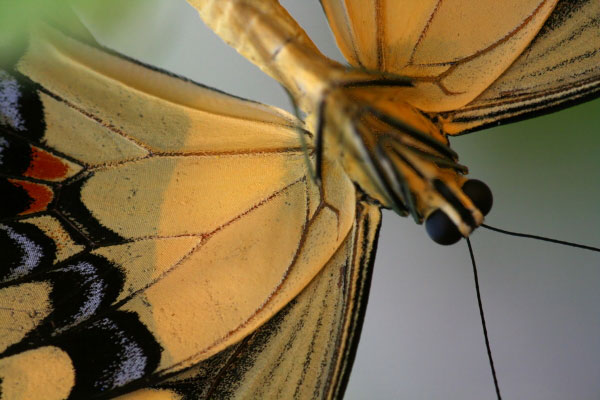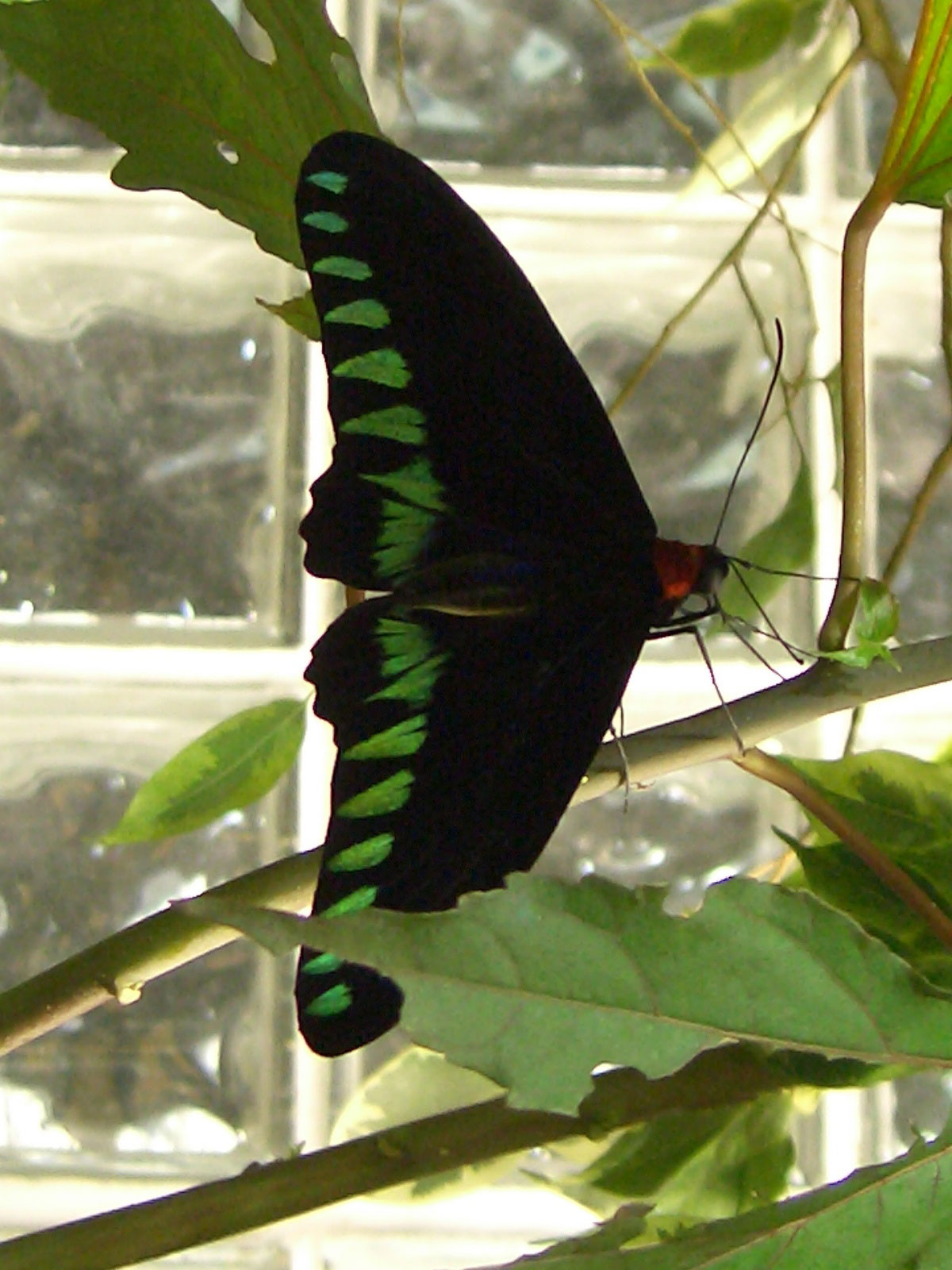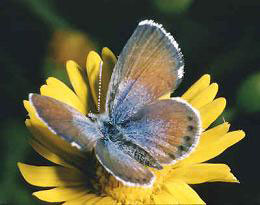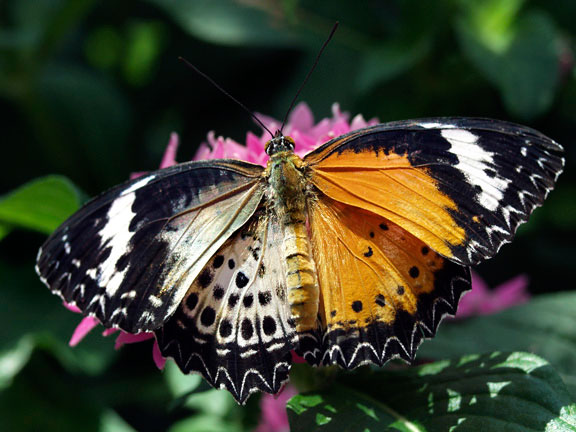













The color of the butterflies is normally bright. They get their colors in two forms, pigmented and ordinary structural color.
Pigmented colors are chemical impregnate pigments on the butterflies’ wings. The ordinary colors are the reflection of the light on the wings.
Butterflies have dust on their wings. This dust is formed by scales or tiny hairs. These scales are to maintain the bright color of the wings, so butterflies can attract the opposite sex. When butterflies are resting, their wings are erect and together. The scales can help the wings to change from bright color to a little dark color, so butterflies can’t be prey of birds or other predators. Also, the scales absorb the light of the sun to keep the butterflies warm especially when butterflies fly to places where the temperature is cold.


Butterflies don’t have the same size.
The largest butterfly in the world is the female Alexandra Birdwing from New Guinea. This butterfly has a wingspan of eight inches.
The male Alexandra Birdwing has a wingspan of six and a half inches.

The physical characteristics of butterflies show whether they are male or female.
The male butterfly is small, and has colorful wings. The female butterfly is bigger in size, and has more brown color on the curved wings.
In rare occasions the butterfly can be male and female. The unique difference is that one side of the butterfly’s wings has the distinguish color of the male butterfly and the other side has the coloration of the female butterfly.

The Leopard Lacewings butterfly can be found in Thailand, the Philippines, and Hong Kong.
Go up